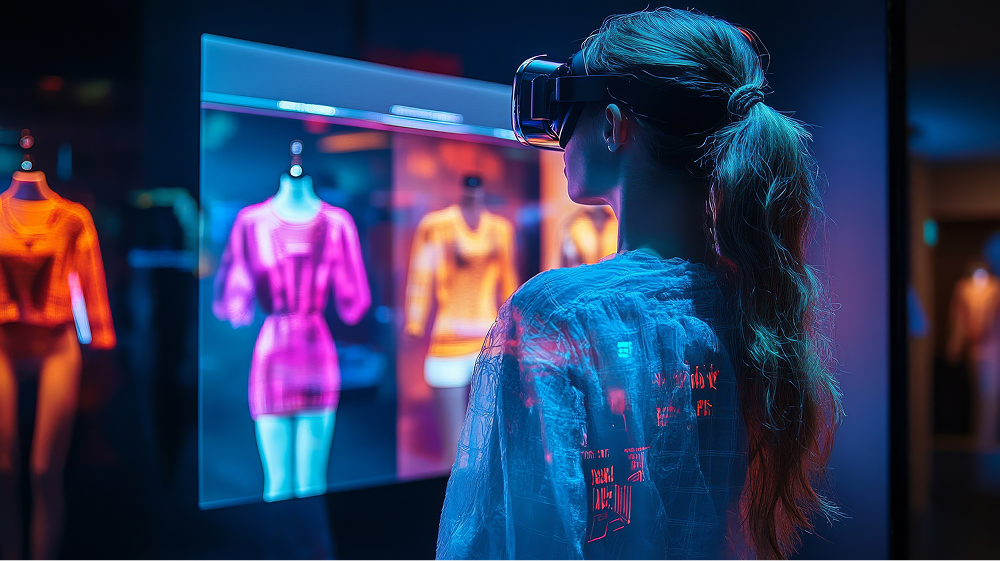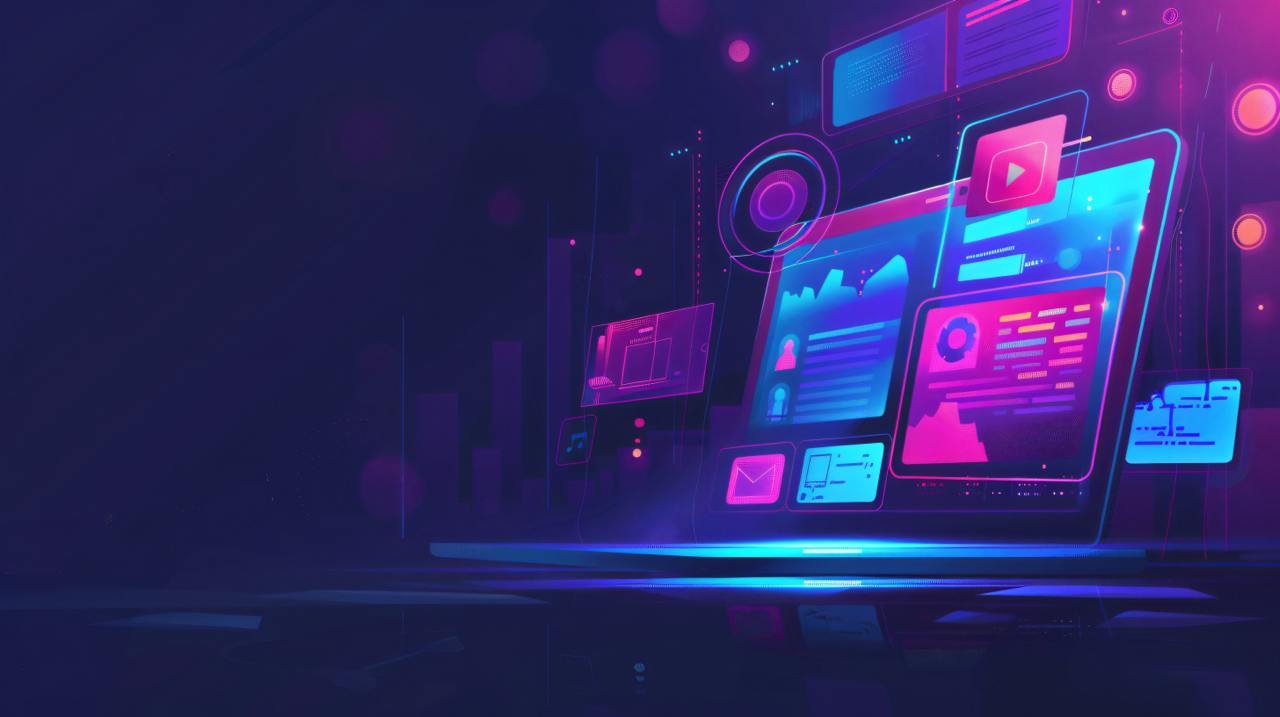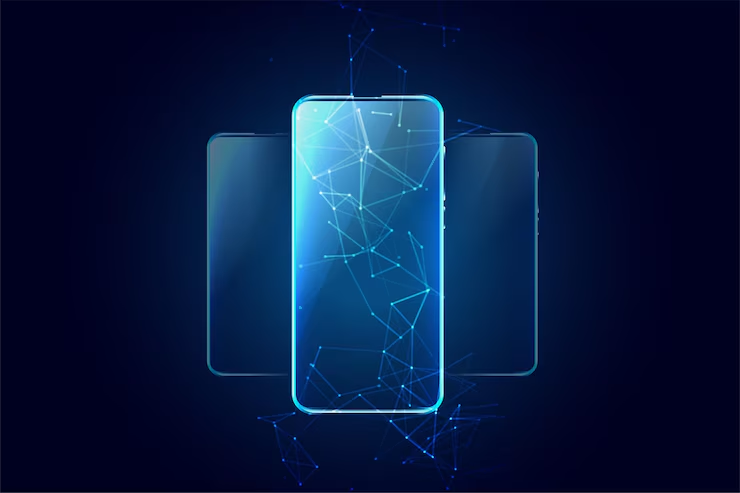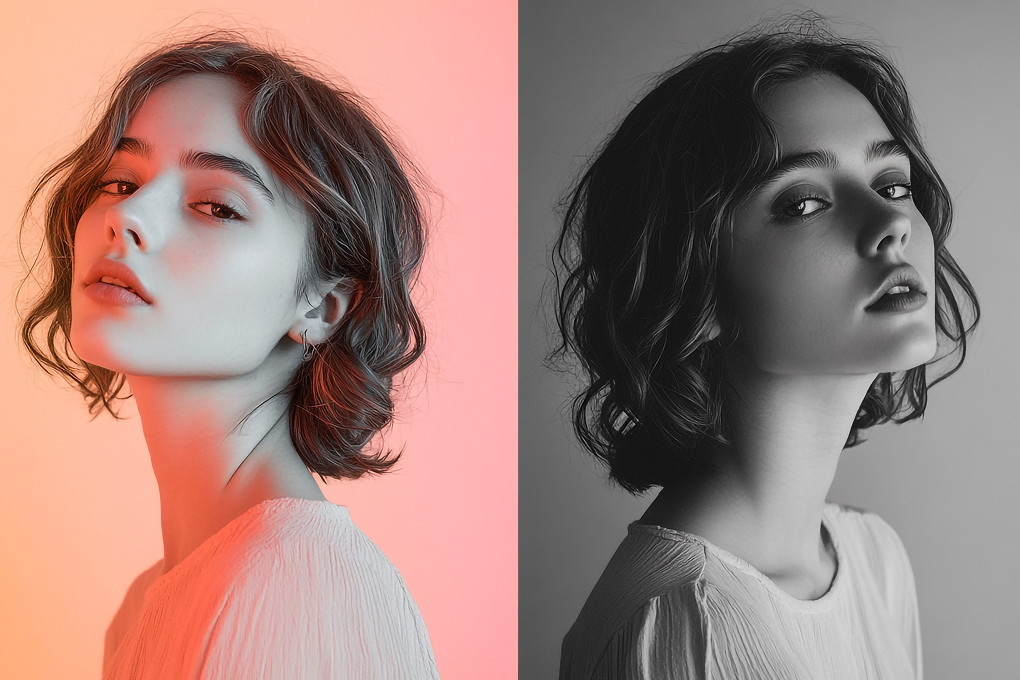Let’s be real—online shopping for clothes can be a total gamble. You scroll, you click, you hope. Two weeks later, you’re stuck returning something that looked nothing like the photo.
But what if you could actually try before you buy—right from your phone? Or step into a virtual boutique where everything fits perfectly because it’s designed just for you?
Fashion’s always been about expression. Now, tech is helping us express ourselves more boldly—and responsibly—than ever. No returns necessary.
What is Augmented Reality (AR)?
You’ve used it. That silly dog filter on Snapchat? The IKEA app that shows how a chair fits in your room before you buy it? That’s AR.
It stands for Augmented Reality—but really, it just means putting digital things into your real world. AR works through your phone or glasses to overlay digital images or info onto what’s actually around you.
And in fashion? It’s changing everything.
You can try on outfits without entering a store, juy use your phone’s camera to see how a dress fits, how sunglasses look, even how makeup shades match your skin tone. No more returns. No more guessing.
Stores use it too—digital mirrors that let you “try” clothes without undressing, virtual runways you can front-row from your couch, even personalized styling that mixes digital and real-time choices.
It’s practical, personal, and honestly… it just makes shopping feel a little more like play. Less stress, more style.
What is Virtual Reality (VR)?
You know when you strap on those goggles and suddenly your couch, your cat, your coffee—all of it just disappears? And you’re somewhere completely new? That’s VR.
Virtual Reality doesn’t just layer digital elements over your world like AR—it teleports you somewhere else. One second you’re at home, the next you’re front row at a virtual fashion show in Tokyo or walking through a digital concept store that only exists in zeros and ones.
Fashion’s jumping all in.
Imagine slipping into a designer’s creative mind—watching garments come to life in a virtual atelier, or even “trying on” digital-only pieces that morph and change with your movement. You’re not just browsing clothes; you’re inside the brand’s imagination.
Designers use VR to dream bigger, waste less, and include everyone—no front row invites required. You get to experience fashion as art, as theater, as pure expression. Not through a screen… but as if you’re really there.
It’s fashion without borders. Without limits. And honestly? It’s a little bit magic.
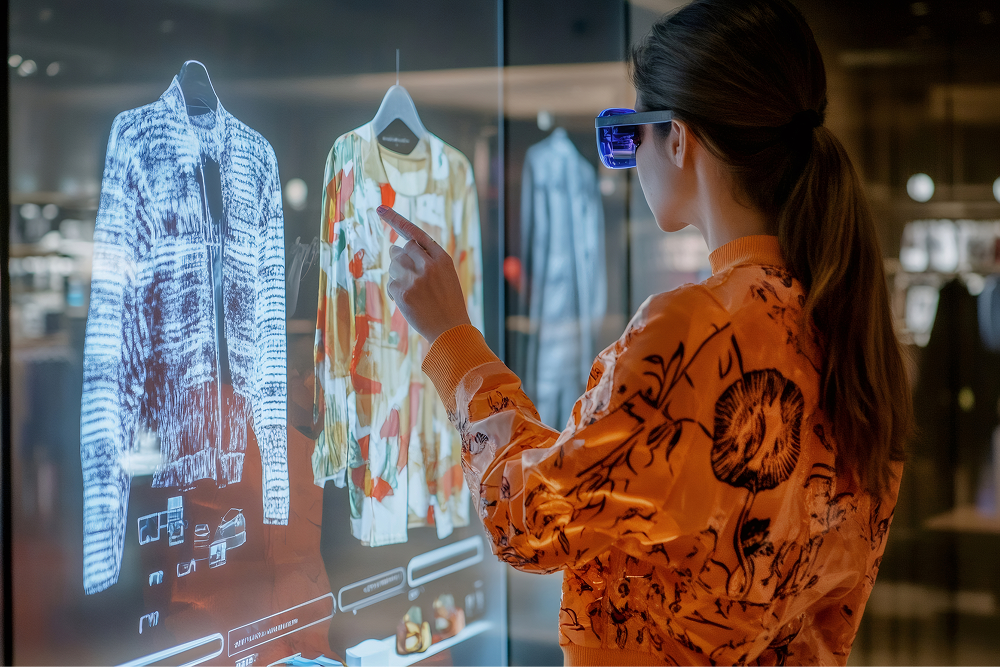
Components of VR Systems
Let’s talk about different components of VR systems. When you put on a VR headset and suddenly you’re not in your room anymore? That magic happens when you have key pieces working together:
The Headset (HMD)
These are the face-hugging goggles that take over what you see. They cover your eyes with two tiny screens—one for each eye—to create a 3D world that wraps around you. Tilt your head, look up, lean in… the view follows you like you’re really there.
Tracking Systems
Little sensors—on the headset, in the room, or even built into controllers—follow your every move. Walk, crouch, reach out to “grab” something… the system sees you and the virtual world reacts. No lag, no glitches. Just real motion mirrored in a digital space.
Controllers or Gloves
These let your hands join the party. Whether it’s a wand-like controller or motion-sensing gloves, you can point, pick up, throw, or even “feel” digital objects. It turns watching into doing.
Together, these pieces don’t just show you a new world—they let you step into it. And for fashion? That means virtual runways you can walk down, digital fabrics you can “touch,” and stores you can browse like you’re really there… without ever leaving home.
How Are AR and VR Changing Fashion?
Shopping for clothes has always been a bit of a gamble. You either brave the fitting room line or play the online guessing game—will it fit? Will the color look right? But what if you could just… know?
That’s where AR and VR step in. They’re turning fashion from a guessing game into an experience—personal, creative, and way more fun.
Virtual Try-Ons Are Here
You’ve probably already used this without thinking—like testing sunglasses through your phone camera. Now it’s moved to full outfits. Open an app, aim your camera, and suddenly you’re “wearing” that dress or those sneakers. You can spin around, check how the fabric moves, even see how it looks in different lighting. No returns needed.
Your Body, Your Avatar
Some apps now let you create a digital you—a 3D avatar shaped exactly like you. You can dress it, style it, and see how clothes fit your body type before buying. It’s like having a personal mannequin that never gets tired.
Runway Shows in Your Living Room
Why fly to Milan when you can have a front-row experience from your couch? Designers are streaming shows in VR—you put on a headset and you’re there. Look up, down, behind you. You can almost feel the fabric as the model walks by.
Magic Mirrors IRL
Stores are installing “magic mirrors” that let you try clothes on without undressing. Change colors, switch pieces, even share your look straight to Instagram. It’s fitting room 2.0—faster, social, and no awkward curtains.
Design What You Actually Want
Want that jacket in green instead of black? Longer sleeves? AR lets you tweak designs live. Adjust details, swap materials, even add custom embroidery—and see it on your body in real time. You’re not just buying clothes—you’re designing them.
Tailored Before It’s Made
Take a quick scan with your phone. Suddenly, the system knows your size better than you do. It suggests fits, adjusts hems digitally, and some brands even tailor the garment before shipping. No more “it’s almost perfect.”
Play stylist—No Mess
Try five necklaces at once. See if red lipstick goes with that hat. Mix prints you’d never dare to in real life. AR lets you experiment freely—no clutter, no commitment.
Share the Fun
Brands are creating Instagram filters that let you “wear” their latest collection. It’s playful, shareable, and turns shopping into something social—even from your couch.
Benefits of AR and VR in the Fashion Industry
It’s not just tech—it’s a shift toward smarter, kinder, and more creative fashion.
- Shopping That Feels Like Play
AR try-ons and VR runways turn browsing into an experience. You’re not just scrolling—you’re playing with style, experimenting without risk, and seeing how clothes really work on you. That kind of fun builds real connection, not just another sale. - No More “Will It Fit?” Anxiety
Shopping from your phone? Now you can actually know if something fits before it ships. Virtual try-ons and body scans take the guesswork out of sizing. Fewer returns, less disappointment—just confidence in what you buy. - Made for You—Literally
Customize colors, hemlines, necklines—even fabrics—in real time. With AR, you don’t just choose from what’s there; you help design it. It’s clothing that reflects you, not just the brand. - Front Row, Anywhere
You don’t need a ticket or a flight to experience fashion week. VR brings the runway to you—front row seats, backstage energy, all from your couch. Fashion’s becoming more open and accessible than ever. - A Greener Way to Glow
Digital samples mean less waste. Virtual showrooms mean fewer carbon-heavy events. And fewer returns mean less shipping and packaging. AR and VR help the industry—and us—dress more consciously.
The Takeaway
This isn’t just convenient—it’s a new way to think about what we wear and how we wear it. Fashion becomes more personal, more playful, and a lot more planet-friendly. And honestly? It’s about time.
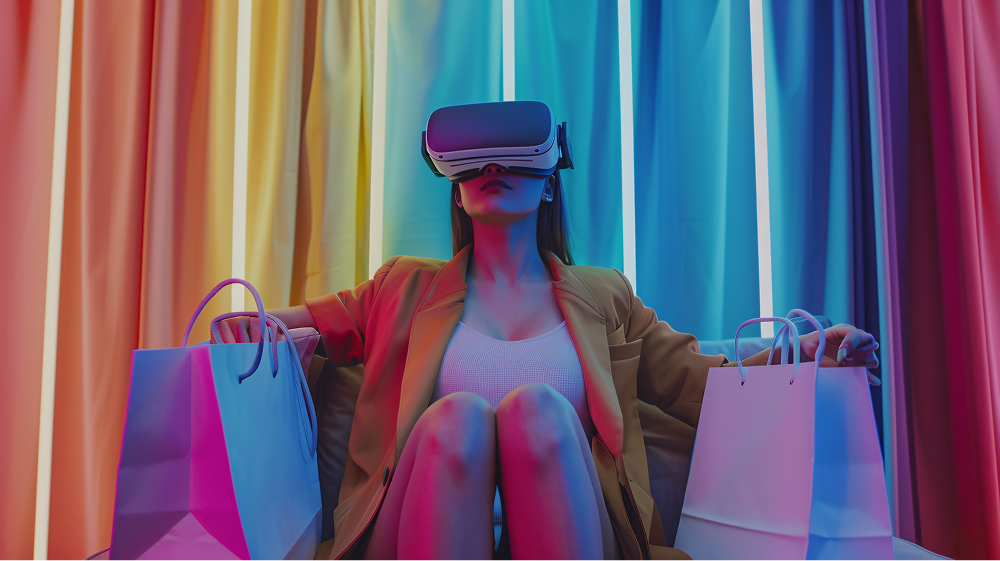
VR: How Virtual Tools Are Making Fashion Greener
It’s no secret—the fashion industry has a waste problem. But slowly, quietly, VR is stepping in to help cut down the environmental cost of looking good.
Designing Without Waste
Instead of making sample after sample—each one using fabric, thread, and energy—designers can now create in VR. They tweak digital designs, test how materials drape and move, and perfect the fit before anything real is ever made. Less physical waste, more creative freedom.
No More Shipping Samples Across the Globe
Brands used to courier heavy garment bags to buyers in different countries. Now? They invite them into digital showrooms. Buyers can explore, zoom, even “feel” textures through haptic tech—all from their own offices. No flights, no vans, no carbon.
Virtual Runways = Zero Waste Events
Traditional fashion shows use insane amounts of resources—building sets, flying people in, lighting up venues. VR shows skip all that. Designers create stunning digital environments—you could be “walking” on Mars or under the sea—without wasting a single plank of wood or liter of jet fuel.
Catching Mistakes Early
When designers and manufacturers work together in VR, they spot errors before production starts. A misplaced seam? Fabric that doesn’t hang right? Fixed with a click. That means fewer physical prototypes, less material wasted, and a smoother, cleaner production line.
VR isn’t just changing how fashion is designed and shown—it’s making the whole process kinder to the planet. And that’s a trend we can all wear proudly.
VR is Turning Fashion Into a Place for Everyone
Fashion used to feel like a private club—elite, expensive, and hard to get into. But VR is changing that, making what was once exclusive now open to all.
No More Invitation-Only Runways
You don’t need money, connections, or a trip to a fashion capital to get a front-row experience. With VR, anyone, anywhere can step into digital front rows, explore virtual showrooms, and feel like they’re part of the action—no passport required.
Clothes That Actually Look Like You
For too long, fashion only celebrated one kind of person. VR is helping change that. Designers are now creating digital collections that work for every body type, skin tone, and identity. You can use avatars that mirror your real features, so you know how something will truly look on you—not just on a sample-size model.
A Platform for Designers Without Deep Pockets
You no longer need a big brand name or a giant budget to share your work. VR lets new designers create stunning digital runways and share their vision with the world—without the crushing costs of physical shows. It’s talent, not money, that takes the spotlight now.
The Changing Job Landscape in Fashion-Tech
It’s true—AR and VR are shaking up traditional roles in fashion. Virtual try-ons, digital showrooms, and AI-assisted design are automating tasks that once required human hands and eyes. That means some familiar jobs—like in-store fitters, sample makers, or runway coordinators—may become less common.
But this isn’t just about job loss. It’s also about job evolution.
Yes, some positions are fading. But new ones are emerging—like virtual stylists, digital material designers, avatar tailors, immersive experience curators, and AR/VR content developers. These aren’t just “tech jobs.” They’re hybrid roles that blend creativity with digital fluency.
The challenge—and opportunity—is retraining.
Seamstresses can become digital pattern experts. Retail associates can transition to virtual personal shoppers. Runway producers can design immersive digital shows.
This shift isn’t about replacing people with tech. It’s about empowering people with new tools. The future of fashion won’t be run by machines—it’ll be built by humans who know how to use them.
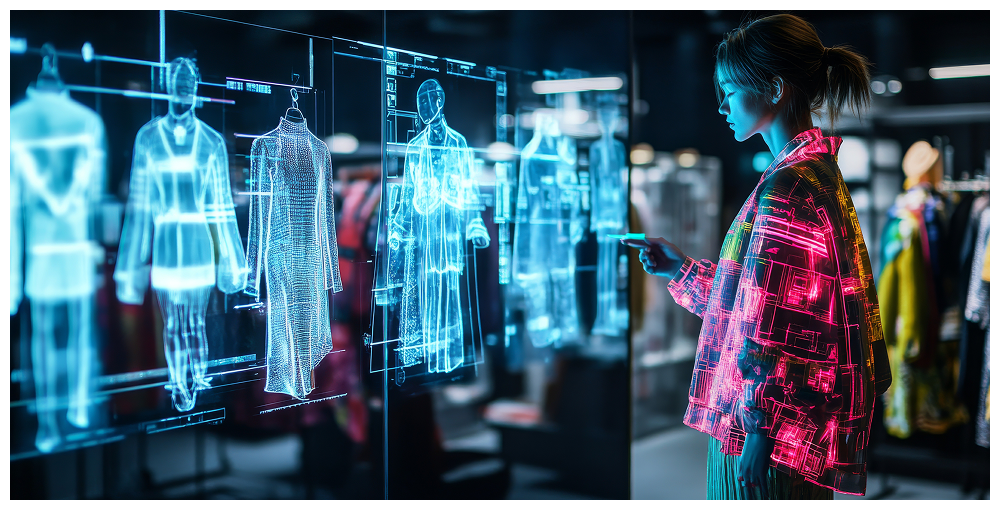
Challenges and Future Directions
Sure, AR and VR sound like the future but getting there isn’t all digital runways and frictionless try-ons. Real barriers still stand in the way.
Cost is Still King
Building high-quality virtual experiences isn’t cheap. From 3D modeling to motion capture, the tech stack adds up quickly. For now, that means mostly big brands can play. Independent designers? They’re often left watching from the sidelines, waiting for tools to become more accessible.
Tech Can Only Do So Much (For Now)
We’ve all seen virtual fabric that looks… plastic. Or lighting that doesn’t behave like the real thing. Capturing the drape, weight, and texture of cloth in a digital space is incredibly hard. And even if the software’s perfect, not everyone has the latest phone or a VR headset lying around.
People Still Want to Feel Fashion
Shopping isn’t just about buying stuff. It’s tactile. People like touching fabric, trying things on in person, walking out of a store with that little branded bag swinging from their wrist. Convincing them that trying something on through a screen is just as good? That’s going to take time. Trust has to be built—not assumed.
What’s Coming Next?
The future’s not here yet, but it’s coming. Tech will get cheaper. Smaller designers will get access. Digital clothes will stop looking like video game graphics and start behaving like real fabric. And as Gen Z and younger shoppers—who’ve never known a world without filters and avatars—become the core audience, virtual try-ons and digital fashion will feel less weird and more… normal.
This isn’t about replacing physical retail. It’s about offering something else—another way to explore, experiment, and express. One that, someday, might just sit comfortably beside the old.
Conclusion
Those new technologies feel bigger than just a new way to shop. It’s like we’re stitching the digital and physical worlds together, thread by thread. Forget just browsing—we’re playing with fashion now. Testing out wild outfits we’d never risk buying, crashing fashion week from our couch, and finding styles that actually feel like us.
And the ripple effects are huge. We’re talking about a serious cut down on waste, a burst of creative freedom, and a legit chance for that amazing indie designer in Lisbon to get noticed everywhere. Look, the tech still has its hiccups—let’s be real, nobody loves clunky goggles. But the train has left the station.
We’re not heading toward a future that’s just online or offline. We’re building a mash-up. And as we get this right, fashion is becoming something better: more personal, way less wasteful, and honestly? A total blast.
The shift is already happening. Buckle up.
